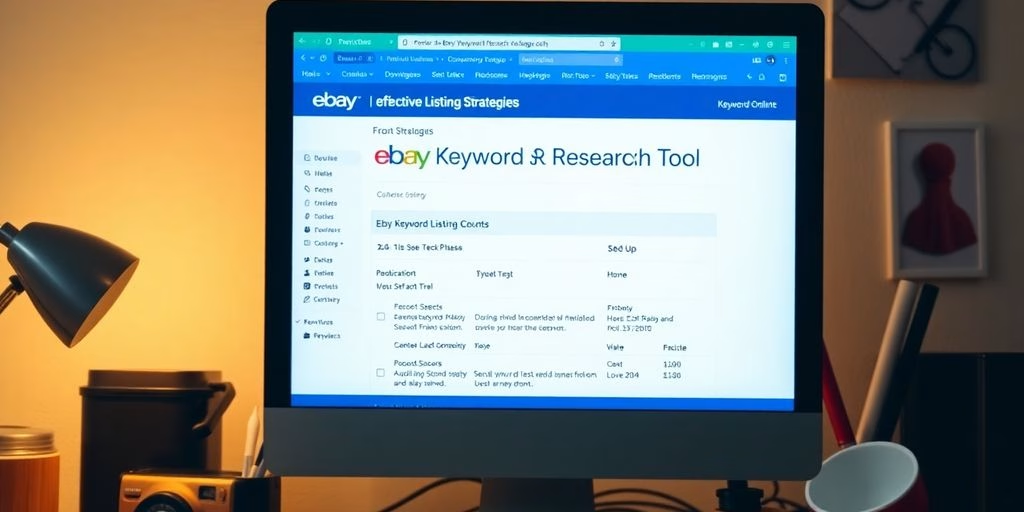In a marketplace saturated with competition, a robust visual identity is not just a nicety but a necessity for any brand aiming to stand out. Crafting a powerful visual identity involves a strategic approach that encompasses the brand’s core values and communicates them effectively through visual elements. From logos to color schemes and typography, each component must work in harmony to create a memorable and cohesive brand experience. This step-by-step guide provides a roadmap for creating a visual identity that not only captures the essence of your brand but also resonates with your target audience.
Table of Contents
ToggleKey Takeaways
- A strong visual identity is strategically crafted to align with a brand’s personality, values, and mission, ensuring a consistent message.
- Key steps include understanding brand influence on visuals, developing a visual direction, and creating a documented visual identity guide.
- Designing a memorable logo, choosing an appropriate color palette, and selecting typography are foundational steps in building a visual identity.
- Establishing brand guidelines is crucial for maintaining consistency across all branding materials and touchpoints.
- A visual identity should evolve over time, incorporating feedback and analytics while balancing tradition with current trends.
The Anatomy of Visual Identity

The Essence of Brand Personality
Unveiling the core of a brand’s personality is like a first date; you want to put your best foot forward. It’s the unique quirks, the ethos, and the values that make your brand relatable and memorable. Think of it as the soul of your company, expressed through every visual cue and interaction.
Choosing Your Palette
A well-chosen color palette is like the perfect background music—it sets the mood without saying a word. Colors convey emotions and associations, so selecting the right hues is crucial for resonating with your audience. Bold choices can make bold statements, but harmony is key.
The Silent Ambassador of Your Brand
Typography is not just about readability; it’s about character. The fonts you choose whisper tales about your brand’s personality. Serif or sans-serif, each typeface has its own secret language that speaks volumes before the first word is read.
Crafting a Visual Vocabulary
The images and graphics you select are the visual shorthand for your brand’s narrative. They’re the illustrations in the storybook of your business, providing context and clarity. A consistent visual vocabulary ensures your brand’s story is told coherently across all mediums.
Crafting an Emblem of Excellence

The Makings of a Memorable Logo
Creating a logo that sticks in the mind is an art form. It’s the distillation of your brand’s essence into a single graphic—a task that demands creativity, strategic thinking, and a deep understanding of your brand’s core values. A memorable logo is the cornerstone of your visual identity, a beacon that shines across all mediums and platforms.
Balancing Simplicity and Complexity
In the world of logos, less is often more. A simple design ensures recognition and recall, but it’s the subtle complexities that give it depth and meaning. Striking this balance is crucial; it’s about creating a logo that’s both scalable and packed with personality, one that can grow and evolve with your brand.
Logo Variations for Different Contexts
Your logo needs to be a chameleon, adaptable to a variety of contexts without losing its identity. From monochrome to full color, from billboards to business cards, ensuring your logo can transition seamlessly between formats is a testament to thoughtful design. This adaptability extends to different cultural contexts, making your logo a global ambassador for your brand.
Testing and Refining Your Logo Design
The journey to the perfect logo is iterative. It involves sketching, prototyping, and testing across a range of applications. Gathering feedback is essential, as it provides insights that refine and perfect the design. Remember, your logo is not just for today—it’s a legacy that will represent your brand for years to come.
Logo design principles emphasize simplicity, versatility, and consistency. Iterative refinement, attention to detail, and scalability are key for creating memorable logos that resonate with audiences.
A well-designed logo is more than just an attractive design; it encapsulates your brand identity and values in a visual form that resonates with your audience.
Establishing Your Brand Guidelines

Embarking on the journey to create a brand style guide is like charting a course through the cosmos of consistency. It’s the stellar map that ensures every visual element orbits around your brand’s core identity. A brand style guide is not just a document; it’s a manifesto that articulates the gravitational pull of your visual elements, from logos to color palettes, ensuring they all move in harmonious synchrony.
The Blueprint of Brand Consistency
Imagine your brand as a constellation in the night sky. Without a blueprint, the stars would scatter, and your brand’s light would dim. A style guide serves as the constellation’s outline, connecting the dots to form a recognizable pattern. It’s a comprehensive manual that details the dos and don’ts, the when and hows, and the exact hex codes and typography to be used across all platforms.
Decoding the Dos and Don’ts
Navigating the dos and don’ts within your brand guidelines is akin to understanding an alien language. But fear not, Earthling! With clear instructions and visual examples, your team can avoid the black holes of branding blunders. This section of your guide will be the Rosetta Stone for your brand’s visual communication, providing clarity and direction.
Guidelines for the Digital Age
In the digital age, your brand must shine across various screens and interfaces. Your style guide must adapt to the ever-changing landscape of digital design, ensuring your brand’s visual identity remains cohesive whether it’s viewed on a smartphone or a billboard in Times Square.
Educating Your Team on Brand Guidelines
Lastly, the success of your brand guidelines hinges on your team’s understanding and adherence to them. It’s crucial to educate your crew on the importance of these guidelines, turning them into brand ambassadors who navigate the visual universe with confidence and consistency.
In summary, your brand style guide is the compass that keeps your visual identity on course. It’s an essential tool for any organization seeking a cohesive and recognizable presence in the marketplace. Refer to inspiring examples and ensure your guide is crafted with precision and care, for it is the foundation upon which your brand’s visual legacy will be built.
Unifying Your Brand’s Visual Touchpoints

The Cohesion Checklist
In the realm of branding, consistency is the secret sauce that binds all elements together. It’s not just about having a snazzy logo or a catchy tagline; it’s about ensuring that every piece of marketing material sings the same tune. To achieve this harmonious blend, start with a cohesion checklist. This should cover everything from your website to your business cards, ensuring that each touchpoint is a mirror reflection of your brand’s core identity.
Aligning Visuals with Brand Voice and Values
Your brand’s voice isn’t just heard; it’s seen. Craft a distinctive brand voice by evoking emotions, staying authentic, and being consistent. The visuals must align with the voice and values, creating a seamless experience that resonates with your audience. Whether it’s the warmth of your customer service or the edge in your social media graphics, every element should be a testament to what you stand for.
Cross-Platform Branding Strategies
Navigating the digital landscape requires a savvy cross-platform branding strategy. It’s about more than just slapping your logo on different platforms; it’s about adapting your visual identity to fit various contexts while maintaining brand integrity. From Instagram filters to LinkedIn banners, ensure that your brand is not just recognized, but remembered.
Monitoring and Maintaining Visual Integrity
The job isn’t done once your brand identity is out in the wild. Regular monitoring and maintenance are crucial to keep your visual identity in check. This means keeping an eye on how your brand is represented across different channels and making adjustments as needed. It’s a dance of refinement, ensuring that your brand’s image remains sharp and true to its essence.
Refresh visual identity strategically. Repurpose content creatively. Find brand’s authentic voice and traits.
Iterating on Your Visual Identity

When to Refresh Your Visual Identity
In the ever-changing marketplace, knowing when to refresh your visual identity is crucial. It’s not about reinventing the wheel; it’s about keeping your brand relevant. Look for signs like shifts in consumer behavior, market repositioning, or simply the age of your design. If your brand starts to feel like yesterday’s news, it’s time for a touch-up.
Incorporating Feedback and Analytics
Feedback and analytics are your best friends when it comes to evolving your visual identity. They provide invaluable insights into what’s working and what’s not. Use this data to tailor your visual identity to consumer motivation, monitor market trends, and analyze competitors for a unique niche. Remember, data-driven decisions lead to deliberate design.
Balancing Tradition and Trends
Finding the sweet spot between tradition and trends can be a tightrope walk. On one hand, you want to stand out with strategic logo design and cohesive brand visuals. On the other, you don’t want to alienate your loyal customer base. The key is to evolve subtly, ensuring your brand remains both recognizable and fresh.
Case Studies: Successful Brand Evolutions
Let’s take a leaf out of the books of brands that have nailed their visual identity evolution. These case studies showcase how to craft a unique visual brand identity by selecting resonant design elements, conducting market research, and differentiating from competitors. They compose impactful messaging and align the customer experience with the brand promise, setting a benchmark for us all.
Remember, a powerful visual identity is not static; it’s a living entity that grows and adapts with your brand.
In the dynamic world of branding, embracing gradual change is key. At CWORKS.ID, we believe in ‘Evolution, Not Revolution’ when it comes to iterating on your visual identity. Our approach ensures that your brand remains fresh and relevant without losing the essence of what makes it unique. Ready to evolve your brand’s visual identity? Contact us now and let’s achieve remarkable success together!
Conclusion
And there you have it, folks—the grand finale of our visual symphony! By now, you should be armed with the know-how to craft a visual identity that not only turns heads but sticks in the minds of your audience like a catchy tune. Remember, consistency is your new best friend, and your brand guidelines are the trusty sidekick ensuring you don’t hit a bum note. So go forth, brand maestros, and let your company’s visual identity sing in perfect harmony with your brand’s voice and values. May your logos be bold, your colors harmonious, and your typography on point. Until next time, keep designing with purpose and a dash of panache!
FAQs
What are the key steps in creating a strong visual identity?
Key steps include understanding your brand’s influence on visuals, developing a visual identity that includes a logo, color scheme, and typography, and ensuring consistency across all branding materials to reflect your brand values and mission.
How do I design a memorable logo?
Design a memorable logo by focusing on the makings of a memorable design, balancing simplicity with complexity, creating logo variations for different contexts, and continuously testing and refining your design.
What should be included in brand guidelines?
Brand guidelines should include a documented visual identity guide with detailed dos and don’ts, typography, color palette, imagery, and instructions for maintaining consistency across digital and traditional platforms.
How can I ensure consistency in my brand’s visual identity?
Ensure consistency by establishing a documented visual identity guide, aligning visuals with brand voice and values, implementing cross-platform branding strategies, and monitoring and maintaining visual integrity.
When should I consider refreshing my visual identity?
Consider refreshing your visual identity when it no longer resonates with your target audience, fails to stand out against competitors, or doesn’t align with current trends and feedback. Iterative updates can help maintain relevance.
How do I educate my team on brand guidelines?
Educate your team on brand guidelines by providing comprehensive training on the brand’s visual elements, the importance of consistency, and how to apply the guidelines across various mediums and contexts.









































































































